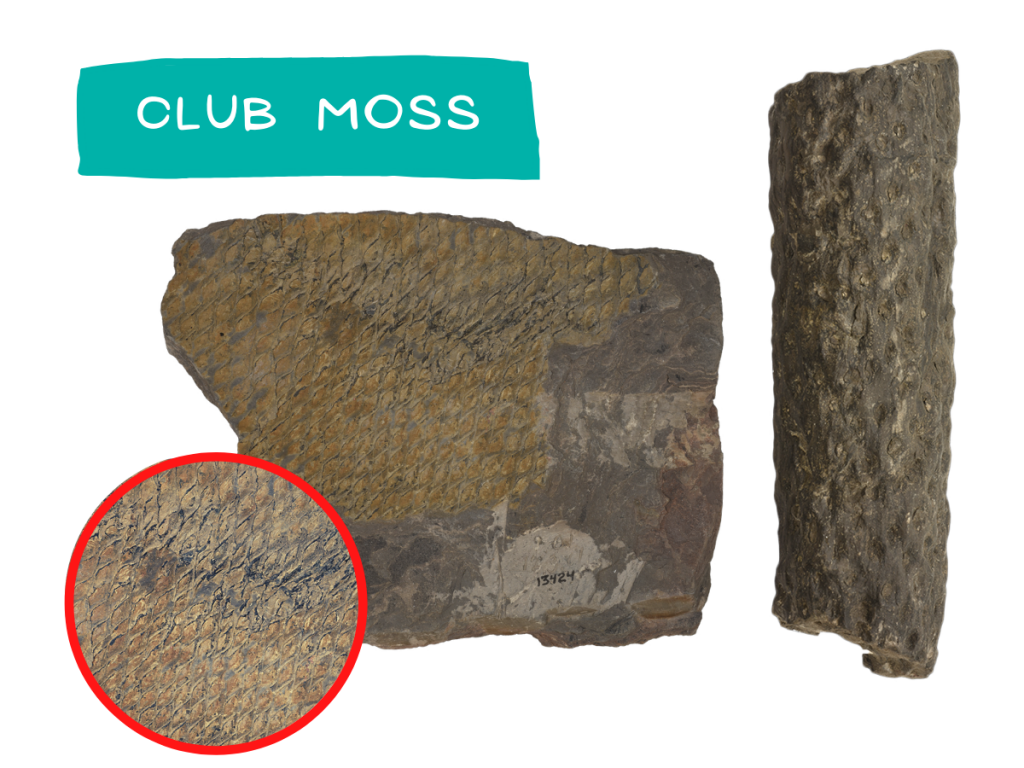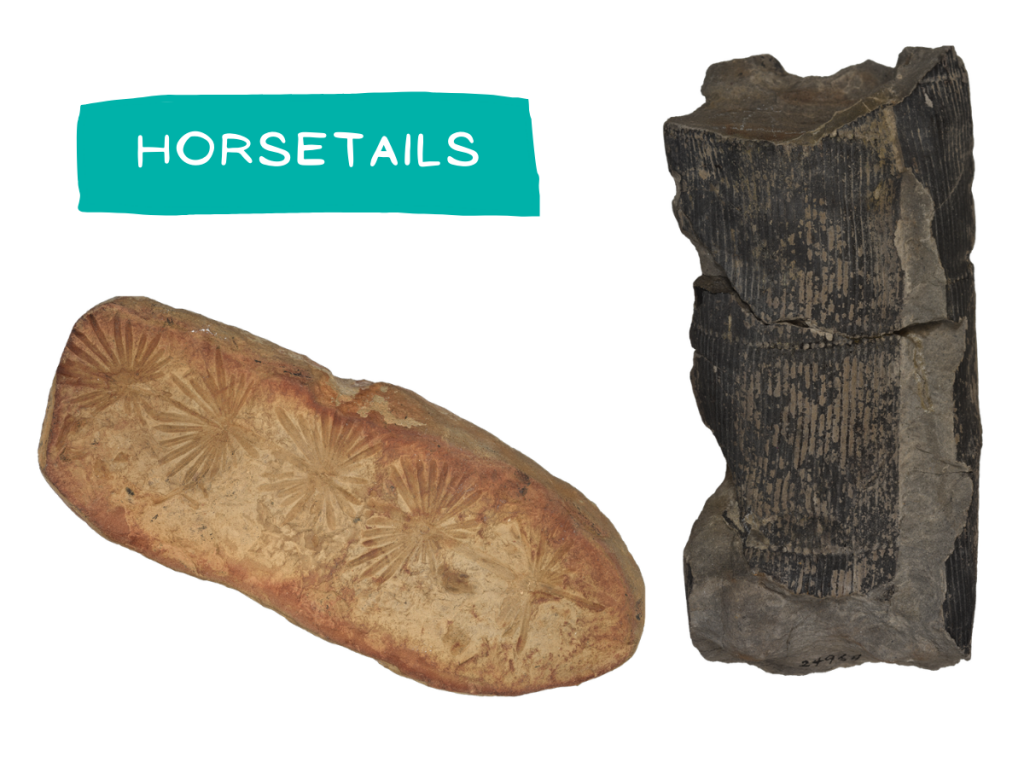
Plants
Rocks from the Carboniferous Period in Michigan contain various plant fossils, with localities in Jackson, Ingham, Eaton, Shiawassee, Saginaw, and Bay Counties being well-documented. Coal deposits are also found in Michigan.
Below are some images and descriptions of just a few common plant fossils that can be found in Michigan.
Please note! The categories below are labeled by the modern relatives of these fossilized plants.
Club Moss Relatives (Lepidodendron and Stigmaria)
Lepidodendron
In Michigan, plant material is found in Pennsylvanian, late Carboniferous, aged rock (323 – 298 million years ago).
It kind of looks like a pineapple!
Impressions of the bark of Lepidodendron, a large, tree-like plant related to club mosses are relatively common. The leaf scars on the trunk form a pattern that resembles the outer surface of a pineapple.
This plant was a common component of the ancient coal swamps of the Carboniferous, remnants of which we find here in Michigan. This plant is often mistaken for fossilized reptile or dinosaur scales.

Stigmaria (Roots)
In Michigan, plant material is found in Pennsylvanian, late Carboniferous, aged rock (323 – 298 million years ago).
The “roots” of Lepidodendron and similar plants are also commonly found in Michigan as natural casts. These are identified as the form genus Stigmaria. Usually, these root-like structures are covered in little dimples or depressions where smaller “rootlets” emerged. Specimens with attached rootlets are uncommon but are also found.
What’s a “form genus”? The different parts of fossil plants are often not found connected as a single object. A form genus is a name given to part of a fossil plant when it is not clear exactly which plant it came from.

Horsetail Relatives (Calamites and Annularia)
Calamites (Stem/Trunk)
In Michigan, plant material is found in Pennsylvanian, late Carboniferous, aged rock (323 – 298 million years ago).
Michigan was also home to other large, tree-like plants closely related to modern horsetails. Natural internal casts of the stems of these plants are known by the form genus Calamites. Size and retention of the original cylindrical form are variable. Click here to view a 3D model of Calamites from Grand Ledge.
Identification Tips:
1. Vertical striations
2. Vertical striations are separated by horizontal bands (nodes) in a relatively uniform pattern.

Annularia (Leaves)
In Michigan, plant material is found in Pennsylvanian, late Carboniferous, aged rock (323 – 298 million years ago).
The foliage was similar to that of some modern horsetails, forming star-like patterns at intervals along the stems. The form genus for these fossils is Annularia.
Identification Tips
1. Recognizable by a cluster or group of leaves that are long and skinny
2. Clusters of leaves are found at nodes along the stems





